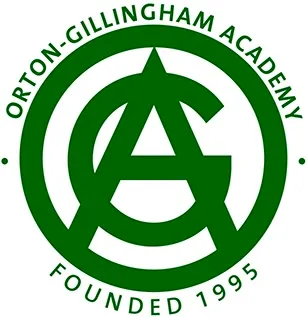The Orton-Gillingham Approach
The OGA Principles focus attention on social and emotional well-being, personal strengths, and educational needs of each learner. They have proven effective for groups and individuals and for typical as well as struggling readers.
Diagnostic and Prescriptive
Instruction is a dynamic, continuous, adaptable process of monitoring student work and giving corrective feedback based on the learner's profile and ongoing performance designed to promote accuracy and automaticity.
Individualised
Instruction is individualised to meet the differing needs of learners who may be similar but not exactly alike. Lessons are customised to meet the learner’s profile, culture, identity, and interests.
Language-Based and Alphabetic/Phonetic
Instruction is a comprehensive practice based on the structure and history of the English language that integrates oral language, reading, spelling, and writing. It begins at the simplest level with phonemes (sounds) and the alphabetic principle (the relationship of sounds to letters) and progresses through complex words and text structures.
Simultaneous Multisensory
Instruction simultaneously utilises the associations of the auditory (hearing), visual (seeing), and kinaesthetic (movement) neural pathways.
Direct and Explicit
Instruction is presented systematically with concepts clearly stated, modelled, and practised. Moving from supported practice to independent practice enhances learning and memory, leading to automaticity and independent application.
Structured, Sequential, and Cumulative but Flexible
Instruction is logically organised and moves from simple, well-learned material to increasingly complex elements. Lessons continuously spiral back to reinforce previously taught skills in an integrated manner. Instructional decisions require flexibility and are based on the learner.
Synthetic and Analytic
Instruction employs both synthetic and analytic processes at all levels of language; these processes are reciprocal and must be closely coordinated.
Cognitive
Instruction engages the learner in an active understanding of what they are learning, why they are learning it, and how to apply their learning in a thoughtful way. It encourages thinking and reasoning rather than reliance on rote memorisation.
Emotionally Sound
Instruction builds confidence and trust by ensuring the learner achieves regular success.
2022 Orton-Gillingham Academy | Academy of Orton-Gillingham Practitioners and Educators
The Orton-Gillingham Approach to Numeracy
Multisensory numeracy instruction is a pedagogical approach that goes beyond traditional methods of teaching mathematics by engaging multiple sensory modalities to enhance the learning experience. Recognising that individuals have diverse learning styles and preferences, multisensory numeracy instruction integrates visual, auditory, tactile, and kinaesthetic elements into the teaching process. By appealing to various senses simultaneously, this approach aims to deepen understanding, improve retention, and foster a more inclusive learning environment for all students of all ages.
Students transition from the representational (pictorial) level of instruction until they are able to deal with numerals at the abstract level. Developing an understanding of base 10, students are able to apply this knowledge across applications and are better equipped to solve maths.

